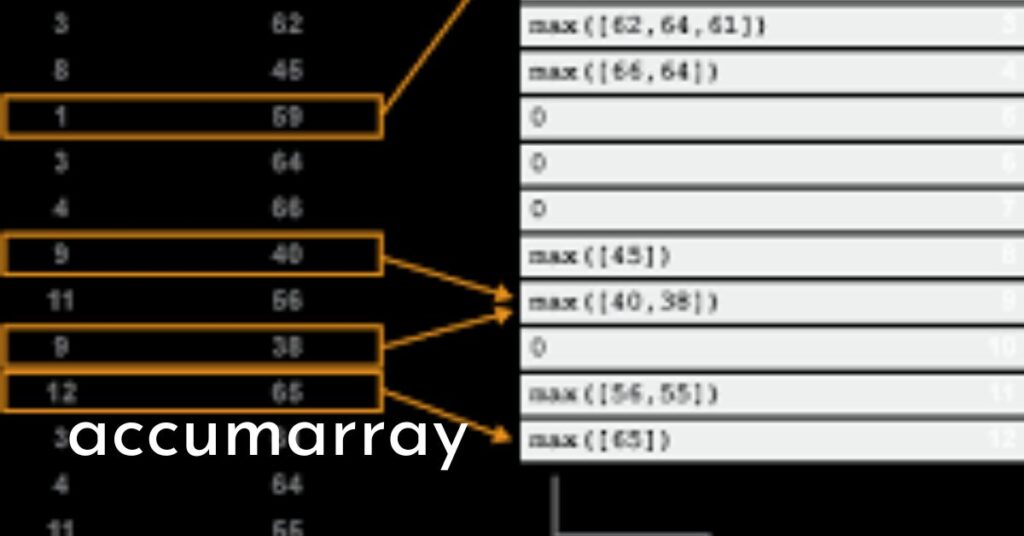Introduction to accumarray
In the fast-paced world of data analysis, efficiency is key. Enter accumarray, a powerful tool that simplifies data binning and provides insights faster than ever. Whether you’re dealing with large datasets or just looking to streamline your analysis process, understanding how to leverage accumarray can make all the difference.
Data scientists and analysts are constantly searching for ways to optimize their workflows. With accumarray at your disposal, you can effortlessly group and aggregate data in a way that reveals patterns and trends previously buried under layers of complexity. Imagine transforming heaps of raw information into meaningful summaries with minimal effort—that’s the magic of accumarray!
This blog post will guide you through everything you need to know about this essential function, from its fundamental concepts to practical applications in real-world scenarios. Get ready to unlock new levels of productivity as we delve into the art of data binning and how accumarray can enhance your analytical capabilities!
What is Data Binning and Why is it Important?
Data binning is the process of transforming continuous data into discrete categories or bins. This technique simplifies complex datasets by grouping similar values together. By doing so, it makes patterns and trends easier to identify.
The importance of data binning lies in its ability to enhance data analysis efficiency. When you have large volumes of information, analyzing every single point can be overwhelming. Binning reduces this complexity.
Moreover, it aids in reducing noise within the dataset. Keeping only significant features highlights relevant changes and relationships among variables.
Binning also facilitates visualization. Graphs and charts become clearer when data points are aggregated into categories rather than scattered as individual values.
Properly applied binning helps decision-makers draw actionable insights quickly from their analyses without getting lost in a sea of numbers.
The Benefits of Using accumarray for Data Binning
Using accumarray for data binning brings a multitude of advantages. Its efficiency stands out, especially when handling large datasets. Instead of laboriously sorting through each entry, accumarray allows quick aggregation based on specified criteria.
Another notable benefit is flexibility. Users can customize how they wish to group their data—whether by averaging values or counting occurrences. This adaptability makes it suitable for various analytical needs.
Moreover, the simplicity of implementation cannot be overlooked. The function integrates seamlessly with existing code and workflows, allowing users to focus more on analysis rather than getting bogged down in programming complexities.
Enhanced performance is crucial for real-time applications. With accumarray’s optimized process, you can achieve faster results without compromising accuracy or detail in your analyses.
How to Use accumarray for Quick Data Analysis
To harness the power of accumarray for quick data analysis, begin by organizing your data into two main arrays: one for the values you want to analyze and another that serves as a grouping factor.
With this setup, use accumarray to aggregate based on your defined groups. This function excels at summing up values, counting occurrences, or even calculating averages effortlessly.
You can customize operations using anonymous functions if basic aggregations don’t meet your needs. This flexibility transforms your datasets into meaningful insights in no time.
Don’t forget about handling missing values. It’s crucial to preprocess your data so that results are accurate and reliable.
Visualize the outcomes with plots or tables afterward; it makes interpreting results straightforward and actionable. With these steps, you’re well on your way to unleashing efficient analysis techniques using accumarray!
Case Studies: Real-Life Examples of Using accumarray for Data Binning and Analysis
A notable case study comes from a retail company analyzing customer purchase patterns. By employing accumarray, they efficiently grouped transaction data by customer IDs. This allowed them to calculate total spending per individual, revealing valuable insights into customer behavior.
In another instance, a research team utilized accumarray for processing survey data in an educational setting. They binned responses based on demographics and aggregated scores. The results highlighted trends that informed curriculum improvements, ensuring better student outcomes.
Additionally, a healthcare provider used accumarray to analyze patient visit records. Grouping visits by diagnosis type enabled the organization to identify common health issues within their community and optimize resource allocation accordingly.
These examples demonstrate how versatile and powerful accumarray can be across various industries, facilitating deeper analysis while saving valuable time in data management processes.
Tips and Tricks for Effective Data Binning with accumarray
When using accumarray for data binning, clarity is key. Start by clearly defining your bins. It helps to know what you want to achieve with your analysis.
Next, ensure your input arrays are organized. A well-structured dataset can significantly enhance the efficiency of accumarrasy operations.
Utilize vectorization wherever possible. This minimizes computation time and leverages MATLAB’s strengths in handling large datasets effectively.
Don’t forget about custom functions within accumarrays. Crafting tailored aggregation functions allows for more insightful analyses based on specific needs.
Experiment with different bin sizes. Adjusting them can reveal patterns that may be overlooked at first glance, leading to deeper insights and better decision-making outcomes.
Conclusion: Embracing the Power of accumarray for Efficient Data Management
Harnessing the power of accumarray transforms the way we handle data. Its ability to streamline data binning and analysis makes it a vital tool for anyone dealing with large datasets. By simplifying complex calculations, accumarray allows users to focus on extracting meaningful insights rather than getting bogged down in cumbersome processes.
Utilizing this function can significantly enhance productivity and accuracy. As organizations increasingly rely on data-driven decisions, understanding how to effectively apply tools like accumarrays become essential. With its straightforward implementation, users can achieve quick results while maintaining high-quality outcomes.
The journey toward efficient data management is ongoing, but embracing accumarrays are a step in the right direction. It opens up new possibilities for analysis and encourages innovative approaches to problem-solving within datasets. Adopting such techniques today ensures that you remain ahead in an ever-evolving digital landscape where effective data handling is paramount.
FAQs
1. What is “accumarray”?
accumarray is a MATLAB function used for efficiently grouping and aggregating data based on specified criteria. It simplifies data binning by allowing users to quickly summarize and analyze large datasets, making it easier to identify patterns and trends.
2. How does accumarray improve data binning efficiency?
accumarray enhances data binning by automating the aggregation process. Instead of manually sorting and summarizing data, accumarray quickly performs operations like summing, averaging, or counting based on predefined groups, significantly speeding up the analysis.
3. Can accumarray handle missing data?
Yes, accumarray can handle missing data, but it’s important to preprocess your dataset to address any gaps. Ensuring your data is clean before using accumarrays will lead to more accurate and reliable results.
4. What types of aggregations can accumarray perform?
accumarray can perform various aggregations, including summing values, counting occurrences, averaging, and applying custom functions. This flexibility allows users to tailor their data analysis to specific needs.
5. Are there any tips for optimizing performance with accumarray?
To optimize performance with accumarrays, ensure your input arrays are well-organized, use vectorization to reduce computation time, and experiment with different bin sizes. Additionally, leveraging custom functions can enhance the relevance of your analysis.







